Namaskāra!Do you like curry? Have you ever tasted Japanese Indian curry when you traveled to Japan? Today I want to recommend you an Indian curry shop (in Kyoto, Japan) which has a reasonable price yet delicious taste. The shop’s name is “Taj Mahal”, which is a famous chain restaurant in Japan.
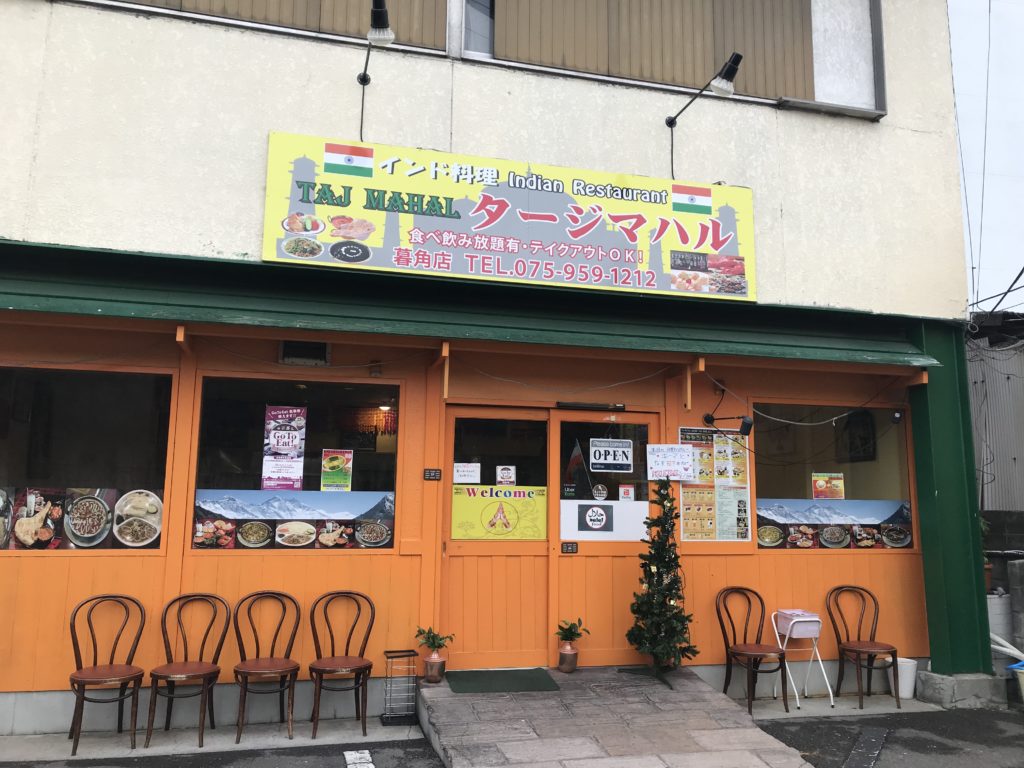
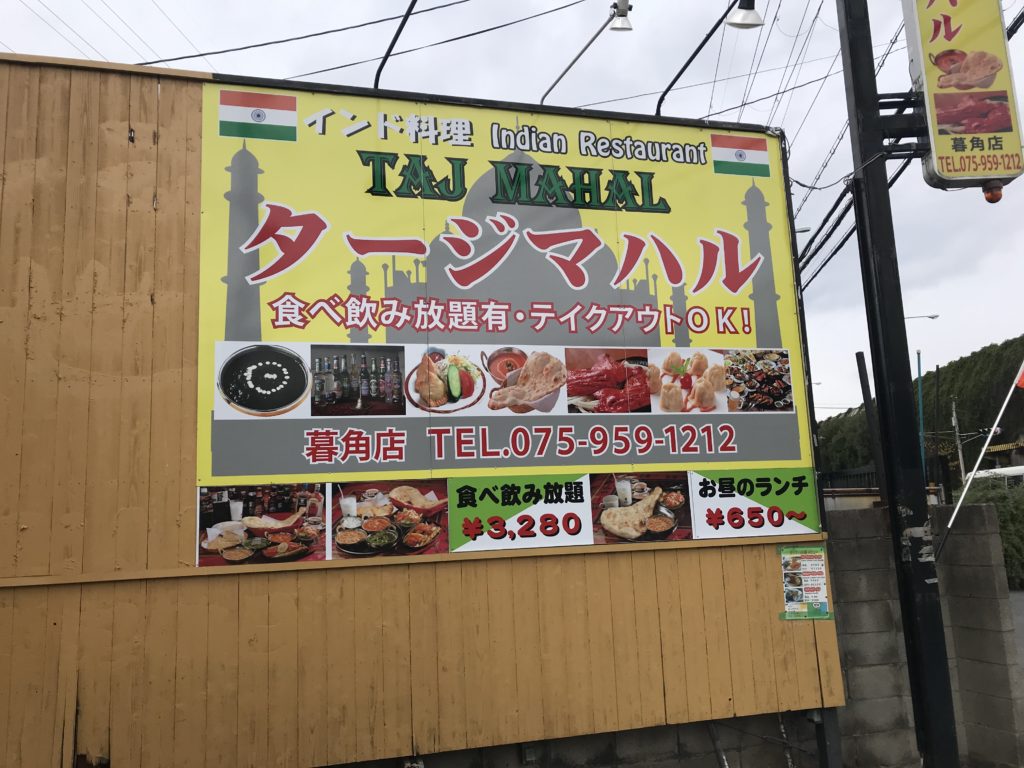
How to access to “Taj Mahal”
If you are a foreigner who loves Japan and now lives in Japan, you could refer to the following map to find this restaurant. It is located in Nagaokakyo city of Kyoto province. It takes about 25 minutes to get to this restaurant by train from Kyoto JR station to Nagaokakyo JR station. It then takes a 15-minute-walk from the east exit of Nagaokakyo station to the restaurant.
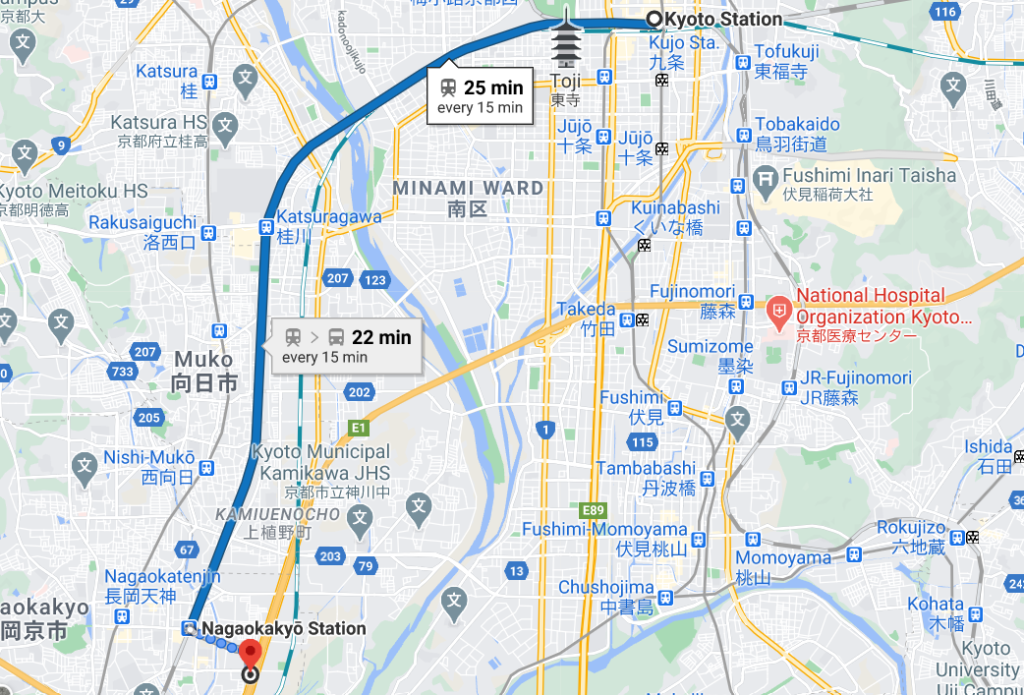
The taste of “Taj Mahal”
We went for lunch and ordered a super spicy lunch. The menu is basically three types: A lunch, B lunch and C lunch.
A lunch ・・・・ 870yen ($8.2) including 1 curry, rice, plain nan, salad, soup and 1 drink.
B lunch・・・・1100yen($10.4)including 2 curry, rice, plain nan, salad, soup, chicken tikka(1pc) and 1 drink.
C lunch・・・・1200yen($11.4)including 2 curry, rice, plain nan, salad, soup, tandoori chicken(1pc) , seekh kabab and 1 drink.
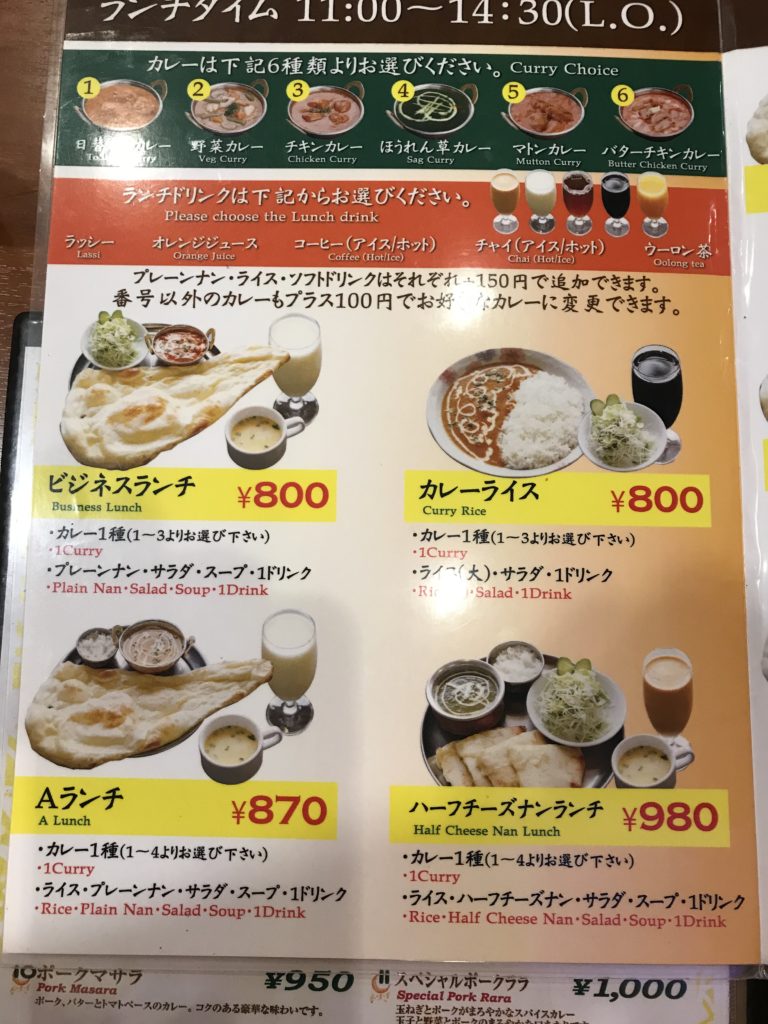 Curry Menu
Curry Menu
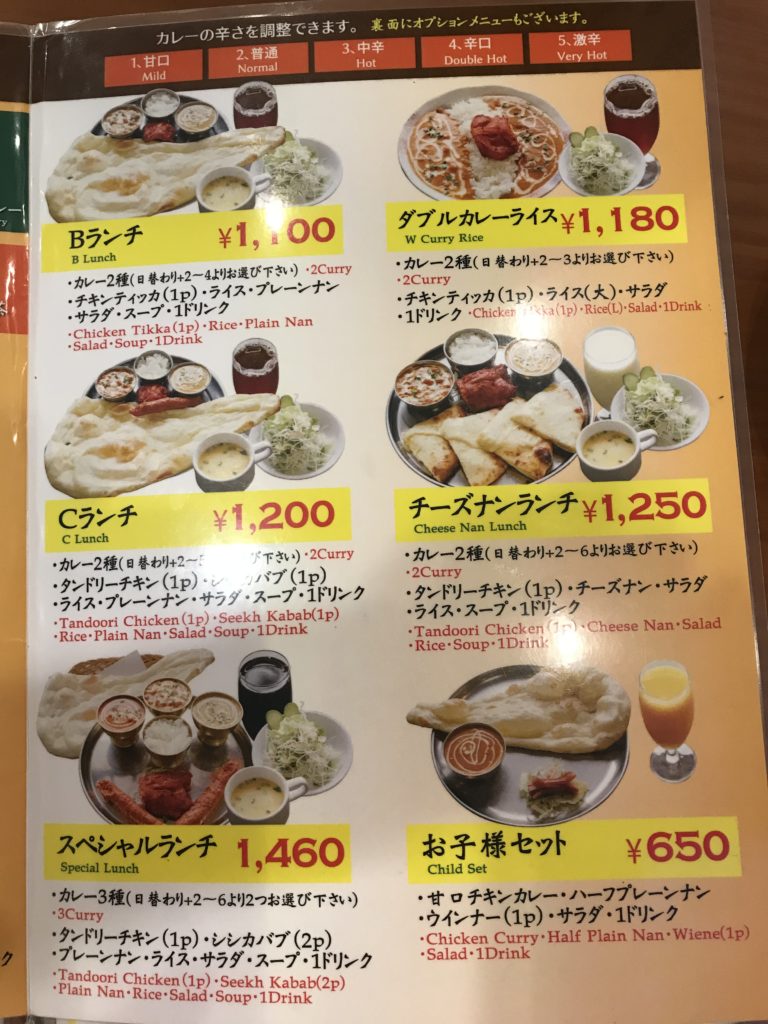 Basic Curry Menu of “Taj Mahal”
Basic Curry Menu of “Taj Mahal”
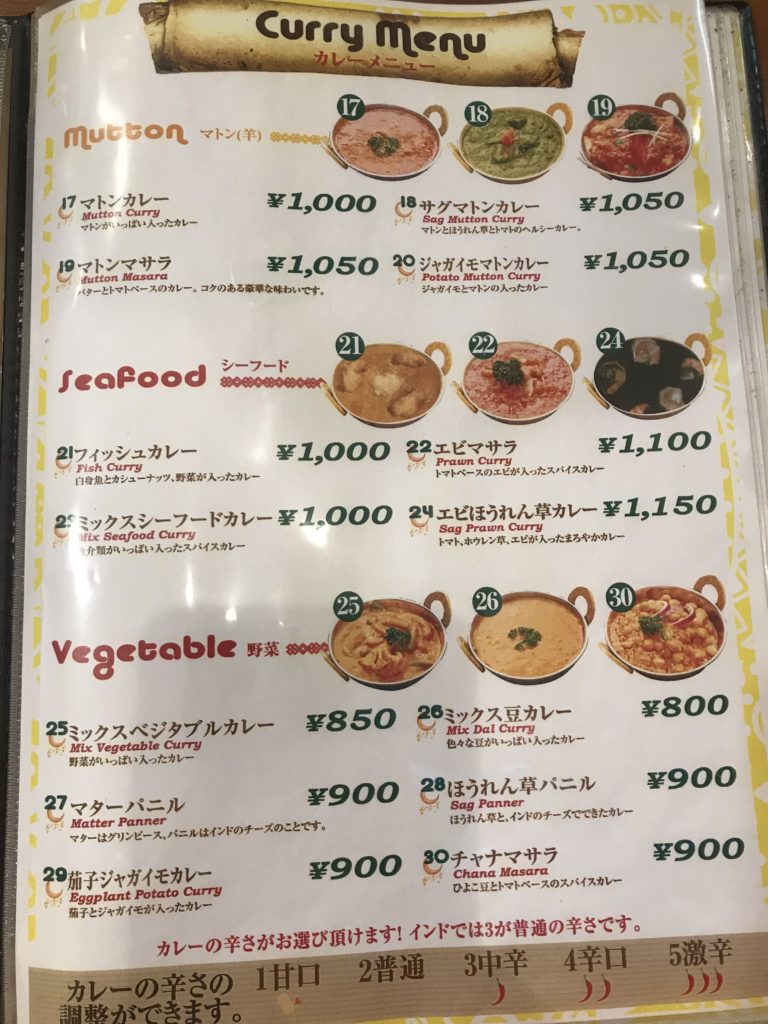 Menu for various curry, you can choose vegetable, seafood curry as well as various spicy degree
Menu for various curry, you can choose vegetable, seafood curry as well as various spicy degree
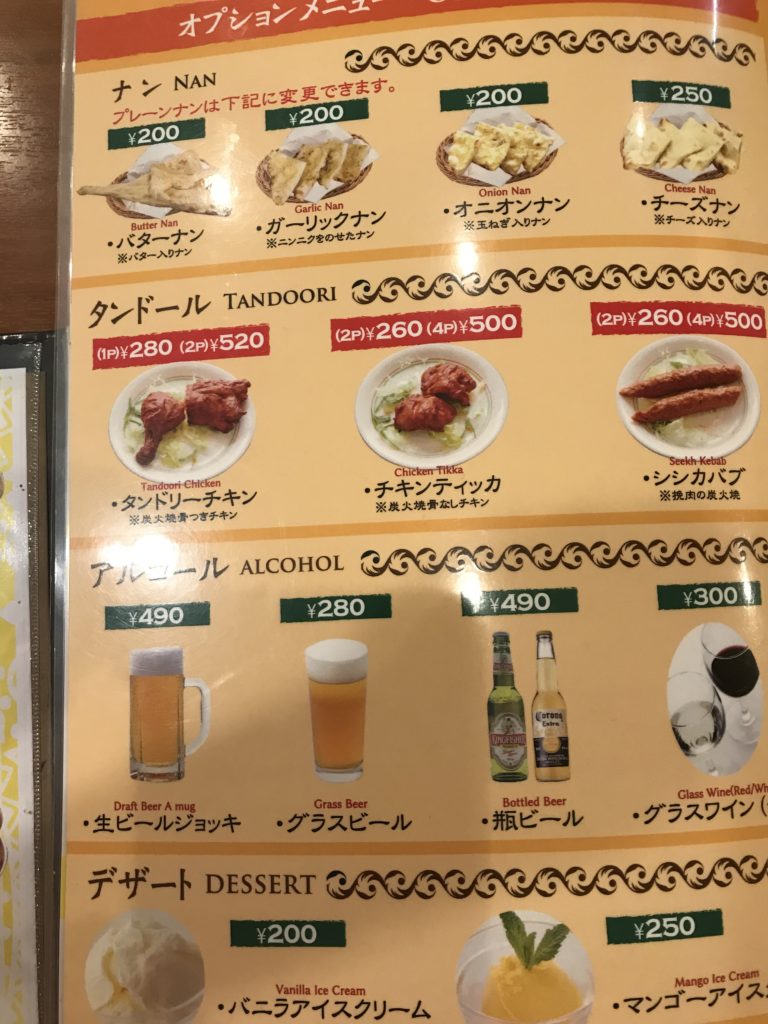
I ordered a heavy spicy mutton curry with curry and chicken nuggets. Since there were lots of customers in the shop, it took 30 minutes for me to wait for my order. When I took the first bite, I felt sweat coming out from my neck. This is the effect of turmeric! Very very spicy, hot, yet healthy and made me happy. Here I’d like to remind you of the actual volume of this lunch set. While you can see from the following picture that there seems like just a little rice, two little cups of curry in front of you, in fact, do not forget you have an additional big “pie”– the plain nan.
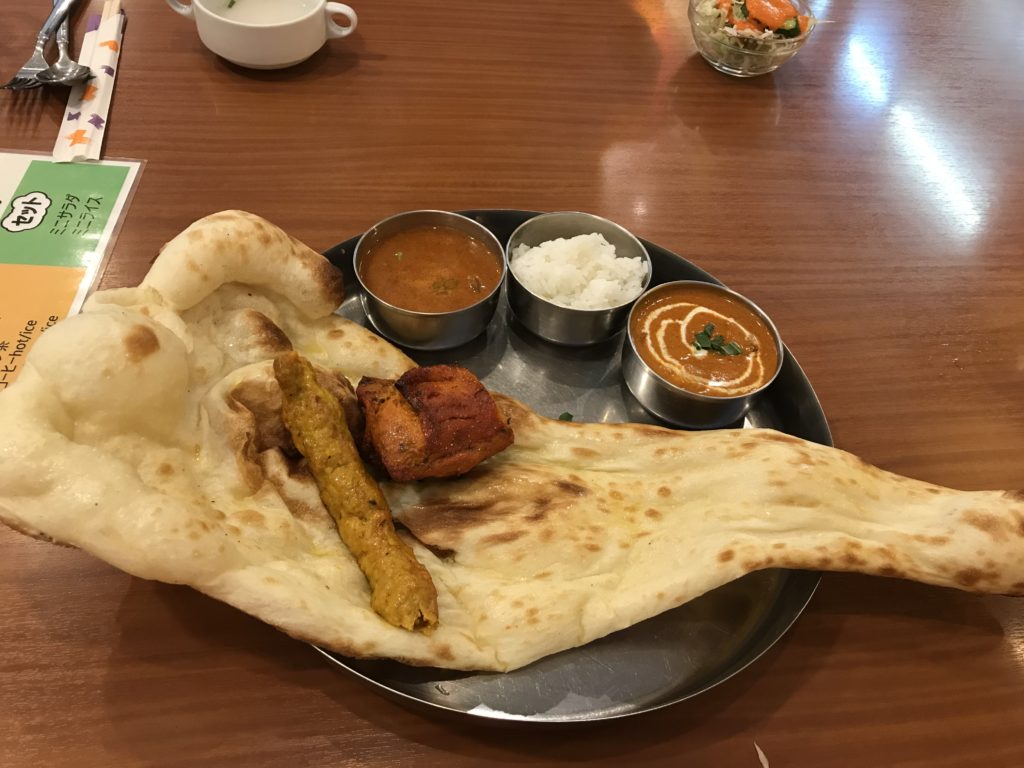 This is my order, C lunch. This is the most spicy curry I have ever ate!
This is my order, C lunch. This is the most spicy curry I have ever ate!
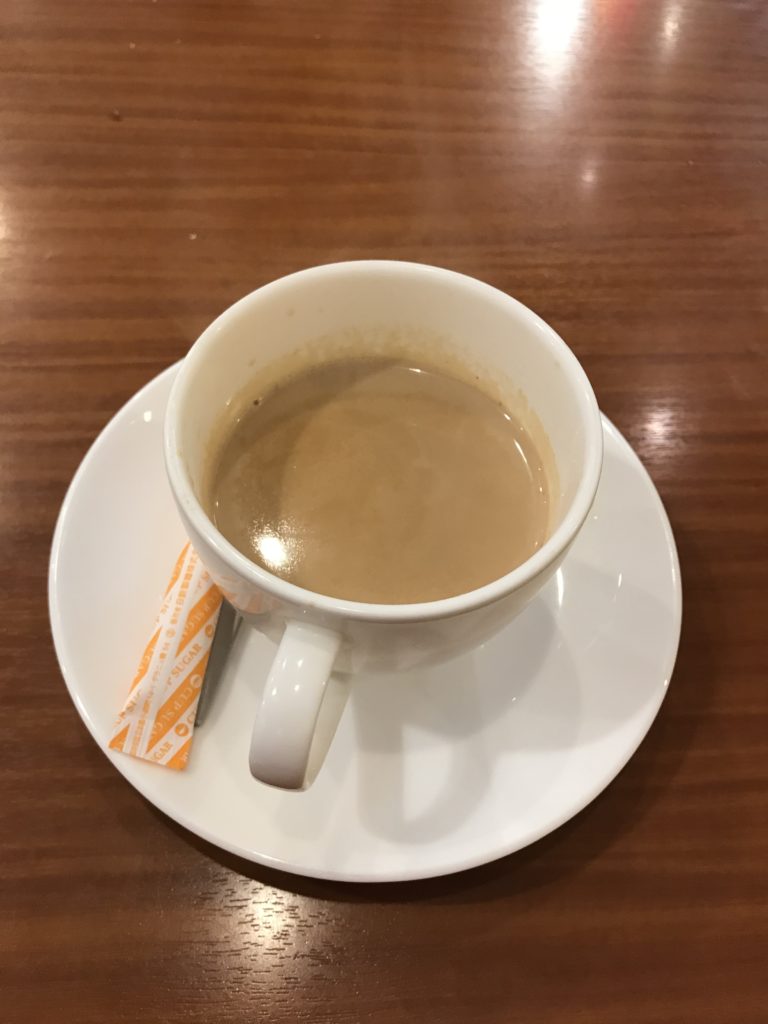 This is Chai, a traditional drink in India. It was mixed with black tea and cinnamon. The fragrance was great!
This is Chai, a traditional drink in India. It was mixed with black tea and cinnamon. The fragrance was great!
The efficacy of curry
1. The main ingredients of curry are turmeric powder, Sichuan peppercorns, star anise, pepper, cinnamon, cloves and coriander seeds and other spicy spices, which can promote the secretion of saliva and gastric juice, increase gastrointestinal motility and increase appetite.
2. Curry can promote blood circulation and achieve the purpose of sweating.
3. The American Association for Cancer Research pointed out that curcumin contained in curry has the function of activating liver cells and inhibiting cancer cells.
4. Curry also has the function of assisting wound healing and preventing Alzheimer’s disease.
How did curry become Japanese national food
Perhaps many people already know that there is no such thing as “curry” in India. The English word “Curry”, which is transliterated into various languages, is said to originate from the Tamil word “Karli”. There is a saying that it refers to the ingredients that are put into the soup, and it also emphasizes the connotation of “flavoring with spices”. But in any case, it does not refer to a specific food but more like a cooking method. Nowadays, Indians still have a different name for each “curry”, but after the British colonists took over, curry/curry became not only India but also the whole of Southeast Asia in other places in the world. A general term for dishes that are sticky.
In Japan, not only does the word curry (カレー) come from English, but the origin of Japanese curry cannot be avoided without the British intermediary. In 1772, Warren Hastings, the first governor of Bangalore, introduced the colonial curry to Britain as a representative. Although this kind of exotic food has a certain degree of recognition in the society, the unavailable spices and complicated preparation methods have not allowed it to penetrate further into the folk. It was Crosse & Blackwell, which was mainly engaged in social banquets, that changed this situation. C&B has revolutionized the introduction of “Curry Powder” with various spices prepared in advance, which greatly facilitates the reproduction of curry dishes at home by ordinary families.
In the 19th century, curry, which had already gained a certain status in the United Kingdom, also came to Japan with a large number of British merchants who entered the port cities of Yokohama after the Meiji Restoration. One evidence that Japanese curry is more borrowed from Britain than India is that British and Japanese curries are more viscous than Indian curries. There are two main reasons for this situation: First, the people who enjoyed curry in the early British were mainly crew members. In order to cope with the turbulence at sea, they would make the curry thicker and not easy to tip over. In addition, British cuisine was strongly influenced by French cuisine at that time, so the British also used “lu” as an important technique when making curry. There are two major structural factors behind curry’s roots in Japan.
What is turmeric? What does it do?
Turmeric, like ginger, is a ginger plant. The turmeric we eat is a golden yellow powder ground from the roots of the plant. It tasted bitter and pungent, but it is very popular and has become a popular food in recent years. For example, Gwyneth Paltrow, the actor and actress in “Iron Man”, loves turmeric and once shared the recipe of turmeric latte on her website.
Turmeric is a cheap food, and it has many uses. It can be used for flavoring in drinks, adding color to dishes, or even directly applied to the body for medicinal effects. In ancient India, turmeric was a kind of food and medicine. Ancient Indian surgeons and Ayurvedic scholars have reported that ointments made from turmeric can relieve food poisoning.
In addition, curcumin has also been proven to relieve inflammation such as rheumatoid arthritis.
Benefits of Equilibrium Superfood
Can I eat curry during diet?
The calories of 100g rice = 116 kcal, per 100g of curry roux is 511kcal. The amount of sugar is 44.7g.
The curry itself is extremely low in calories, however, making it into a marinade (containing starch) or adding oil during cooking will increase the calories of foods containing curry. Studies have confirmed that curry can help reduce the postprandial insulin response, and can also promote energy metabolism, make people consume more calories, promote fat oxidation, and thus help prevent obesity.
American researchers divided 36 middle-aged volunteers into two groups. One group ate mild-tasting food, and the other group ate 50 grams of spicy curry on this basis. After 4 weeks, the two groups of volunteers changed their diets until the end of week 8. The volunteers’ blood insulin, C-peptide, and energy expenditure were measured 4 weeks after the experiment started and 8 weeks later. The results showed that the blood insulin curve of those who consumed spicy curry decreased significantly, while the energy consumption curve increased. The researchers concluded that eating curry is beneficial to reduce the secretion of insulin after meals and increase the body’s energy expenditure, which reduces the chance of synthesizing fat.
